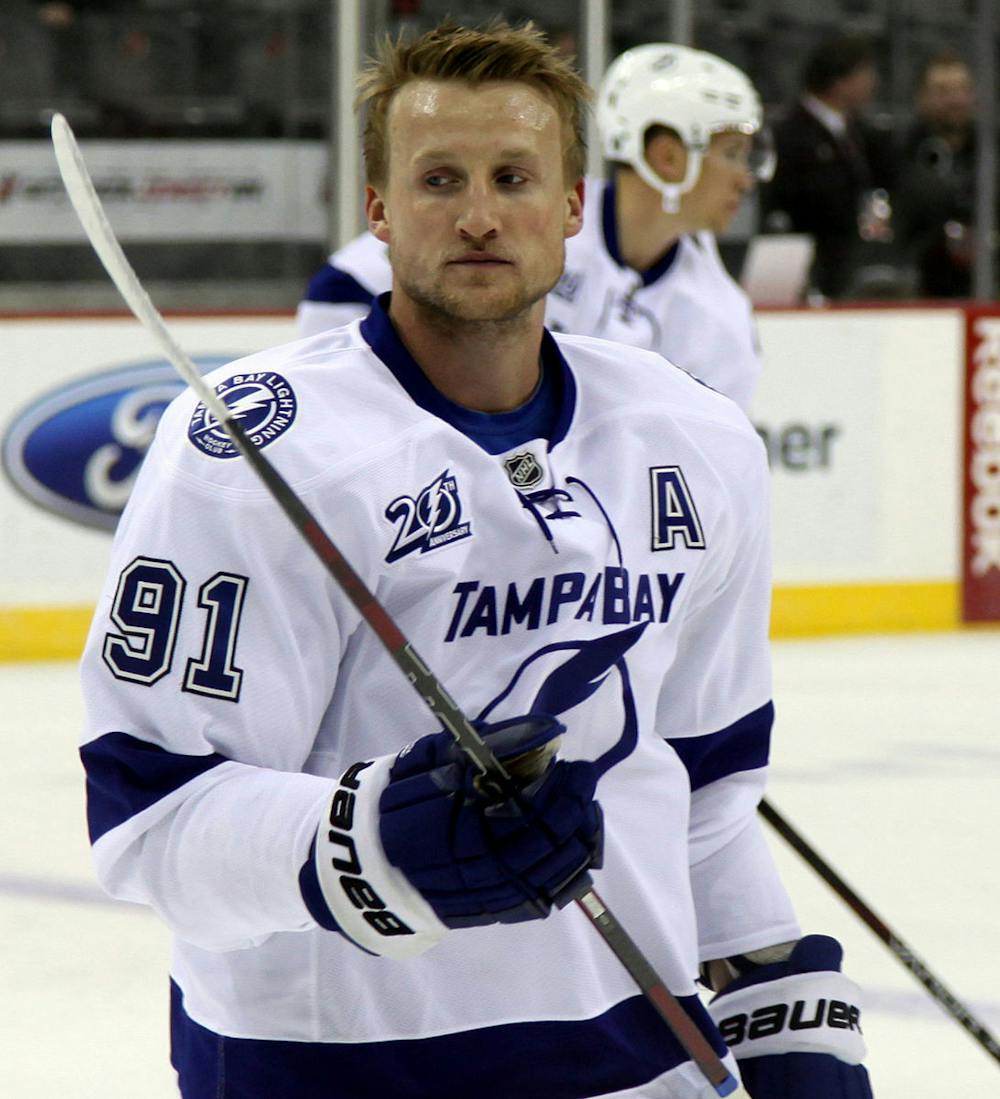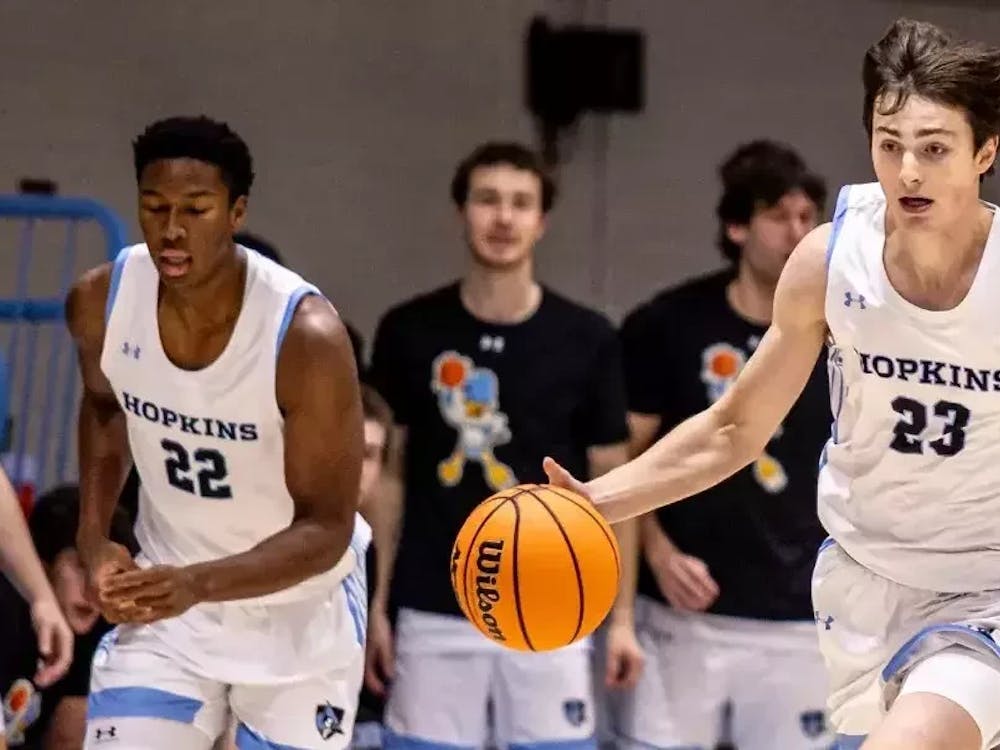
The National Hockey League’s (NHL) free agency begins this Friday. The lead up has been filled with exciting trades and speculation, so let’s dive in.
A referendum on the value of a good contract
On Feb.16, 2020, the Tampa Bay Lightning sent 2019 first-round pick Nolan Foote and a 2020 first-round pick to the New Jersey Devils for 20-goal scorer Blake Coleman. Just eight days later, Tampa Bay would ship out another first-round pick to acquire gritty penalty killer Barclay Goodrow.
Coleman and Goodrow were great additions, but Tampa Bay paid less for these two players’ production and more for the asset of having two contracts that paid less than the market value for each player.
On Sept. 28, 2020, the Lightning would win the Stanley Cup with highly paid players like Steven Stamkos, Nikita Kucherov and Victor Hedman, who made up 32% of the salary cap and were complemented by great values in Coleman and Goodrow, who made up less than 3% of the cap.
However, in the aftermath of Tampa Bay winning the Stanley Cup, we have seen very polarizing indications of the perceived value of a good contract — a bizarre referendum has decreased the salary cap by $4 million to $8 million, and many teams are trying to trade players to cut payroll.
In a move that was actually widely criticized, the Pittsburgh Penguins paid an arm and a leg by giving up first-round pick and prospect Filip Hallander for four years of team control of Kasperi Kapanen and his $3.2 million per year contract. The Detroit Red Wings pried a second-round pick out of New York in exchange for relieving them of the $5.7 million owed to Marc Staal. The Buffalo Sabres sneakily nabbed a second-line center on a bargain contract from the Minnesota Wild in trading for Eric Staal.
However, the Montreal Canadiens inexplicably traded a third-round pick for the privilege of assuming a bad contract that the St. Louis Blues needed to shed: $4.4 million backup goalie Jake Allen. Pittsburgh voluntarily acquired six years of Mike Matheson, who is potentially one of the 10 worst contracts in hockey, for a declining but uniquely physical playoff performer in Patric Hörnqvist. And Montreal preemptively ponied up $3.5 million per year for four years to depth defenseman Joel Edmundson.
The NHL is perplexingly at a crossroads on the value of a good contract. Sure, Allen, Matheson and Edmundson are all NHL-caliber players, but does the new salary cap really represent an efficient allocation of resources? There are more teams looking to shed money with depressed revenues due to the pandemic, and many teams are seemingly missing out on the chance to take advantage.
In 2016 the Arizona Coyotes were able to acquire the 15th overall pick (which they used to take Jakob Chychrun, their current number two defenseman) in exchange for a year of Pavel Datsyuk’s $7.5 million cap hit. In that same year, Arizona also acquired top prospect Lawson Crouse and the albatross $5.5 million contract of David Bolland from the Florida Panthers for two mid-round draft picks.
Two years ago the Chicago Blackhawks traded promising young forward Vinnie Hinostroza to Arizona to get out of allocating $5.275 million to the injured Marián Hossa (although long-term injured reserve lowered the actual cap hit). That same year the Winnipeg Jets gave up promising forward Joel Armia to get Montreal to assume the remaining $4.1 million cap hit of backup goalie Steve Mason’s contract.
Just last year the Toronto Maple Leafs begrudgingly parted with a first-round pick to trade $5.5 million of forward Patrick Marleau to the Carolina Hurricanes. This year the Red Wings have been the only team so far to leverage their salary cap space in a similar light.
The takeaway here is not that the Arizona Coyotes are the league dumpster for bad contracts but rather that salary cap room is a highly valued commodity. Is Montreal really better off with backup goalie Allen and defensemen Edmundson or the first-round pick they could likely get for assuming $7.65 million in a salary dump?
The jury is still out, but if you asked the average NHL general manager (GM) whether he or she would trade a first-round pick for one year of Allen and Edmundson, I think that the answer would be the former for sure. If you need a stat to tell you that, Montreal GM Marc Bergevin has been told by ownership that he has to make the playoffs this year; I don’t think it gets any clearer.
It’s time for non-contending teams to take a page out of Carolina and Detroit’s book to take on bad contracts for high draft picks instead of voluntarily assuming contracts of players like Allen, Matheson and Edmundson without high compensation.
An offer sheet is likely to happen
Outside of the debate about the value of a good contract, this year is likely to be the first one in recent memory to involve a successful offer sheet. Despite the rarity of GMs making use of the offer sheet other than Bergevin’s understandable but futile attempt to pry Sebastian Aho out of Carolina last year, this is going to be the year of the offer sheet.
An offer sheet is a tool for GMs to sign restricted free agents, with the caveat that they forfeit draft pick compensation to the team who holds the rights based on the average annual value of the contract.
Tampa Bay is in a salary cap bind, making Mikhail Sergachev, Anthony Cirelli and Erik Cernak all prime candidates for an offer sheet. Because of the New York Islanders’ bad contracts in Andrew Ladd, Johnny Boychuk and Nick Leddy, teammates Mathew Barzal, Ryan Pulock and Devon Toews are prime candidates for an offer sheet.
Tampa Bay is going to do everything in their power so that Cirelli and Sergachev, who are young studs, remain Stanley Cup contenders for the coming years.
New York is going to match anything offered to Barzal and knows the value of Pulock more than any team in the league. But the key to a successful offer sheet is to find a good young player who is worth between $2.18 Million and $4.36 Million and a second-round pick; Cernak and Toews fit this bill.
But there is not going to be enough money for either team to match an offer sheet for Cernak or Toews if it comes in at $3.5 million or more per year. They are the two players I think will quite likely receive offer sheets. Also expect Vince Dunn of the St. Louis Blues, Travis Dermott of the Toronto Maple Leafs and Jonas Siegenthaler of the Washington Capitals to potentially receive interest in potentially being given the offer sheet.
Looking to the coming weeks: some predictions on free agents and trade targets
Expect Frederik Andersen to stay put. Sure, he has had his moments in the Leafs playoff disappointments, but he is a top-tier goaltender and a bargain at $5 million per year. It’s the defense and style of play that Toronto needs to adjust.
Matt Dumba will probably stay in Minnesota. He is a really solid player on a good, not great contract who is capable of being a top two defenseman on the team. Sure, Minnesota likely needs to move him before the 2021 expansion draft, but I think they will wait longer.
Elvis Merzlikins and Joonas Korpisalo to stay put on the Columbus Blue Jackets. They are both great goalies on great contracts.
On one hand, the Boston Bruins are really kicking the tires on Oliver Ekman-Larsson. They look like they are going to let Torey Krug walk in free agency, and they need a replacement. Ekman-Larsson is the best player out there in this regard; some might even argue he’s an upgrade.
On the other hand, Ekman-Larsson is still a good player, but a very pricey one. Eight more years at $8.25 million per year is a lot, especially in a depressed spending climate. Is anyone really going to give up meaningful assets to get him when you could sign Krug in free agency? But Ekman-Larsson has a no-trade clause and is reportedly only interested in a trade to Vancouver or Boston. I just don’t see a way that Vancouver can make it work from a cap standpoint. I think it’s either Boston or he’s staying put.
To afford young building blocks like Cirelli and Sergachev, Tampa Bay is going to have to move at least one and maybe even two of Yanni Gourde, Tyler Johnson and Alex Killorn. Their level of interest in trading them probably declines in that order, but Killorn is the only one of the three without a full no-move clause, so he is probably the most likely to be moved.
Gourde is overpaid and Johnson is underrated. Killorn is a great contract, but his lack of a no-trade clause will likely cause him to be the one moved; he should be a great acquisition for whoever acquires him.
Vegas Golden Knights goalie Marc-André Fleury will likely be on the move, but don’t assume that his contract will be easy for Vegas to trade. Minnesota makes a lot of sense for Fleury, but I would be surprised if Vegas gets Fleury without taking on another burdensome contract for the year. Carolina makes a lot of sense, but I would be surprised if Carolina takes Fleury without sending defenseman Jake Gardiner the other way.
Expect the Penguins to trade goalie Matt Murray. But don’t expect them to get much of anything in return. Murray is a good but not great goaltender. He’s solid and you can win a Cup with him if the team in front of him is fantastic.
However, he is too prone to getting beat top shelf and is not quite a bona fide number one. Every GM knows that Pittsburgh needs to trade him and that there is a glut of good goalies on the free agent market. Therefore, Pittsburgh has no leverage.
Left wing Taylor Hall will leave Arizona. The Arizona front office probably can’t pay him what he’s going to get in free agency, and the draft pick penalties have to decrease the appeal of remaining with Arizona for the long term.
How these predictions will fare will be known for sure when the season plans to resume on New Year’s Day in 2021.





